Introduction
Ice-chilled asparagus is a culinary delight that combines simplicity with elegance, offering a crisp, vibrant texture and a refreshing taste that elevates any meal. Whether served as an appetizer, a side dish, or a light main course, this versatile vegetable shines when prepared with precision and care. The key to achieving perfection lies in understanding the nuances of selection, preparation, and cooking techniques. This article delves into the secrets of crafting impeccable ice-chilled asparagus, from selecting the freshest spears to mastering the blanching process and exploring creative serving ideas. By the end, you’ll be equipped to transform this humble vegetable into a restaurant-worthy dish that impresses guests and satisfies even the most discerning palates.
Chapter 1: Selecting the Perfect Asparagus
The foundation of exceptional ice-chilled asparagus begins at the grocery store or farmers’ market. Freshness is non-negotiable, as the quality of the spears directly impacts flavor and texture. Here’s what to look for:
- Thickness Matters: Asparagus spears come in thin, medium, and thick varieties. Thin spears (pencil-thin) are tender and cook quickly, while thicker ones (pencil-thick or stouter) have a meatier texture. For ice-chilled preparations, medium to thick spears are ideal, as they hold up better during blanching and chilling without becoming mushy.
- Color and Firmness: The spears should be vibrant green (or purple/white, depending on the variety) with firm, tight tips. Avoid spears with wilted tips, as this indicates age. The stems should feel rigid when gently bent—a sign of freshness.
- Uniformity: Choose spears of similar thickness to ensure even cooking. Mixing thick and thin spears in the same batch will result in uneven doneness.
- Storage Hacks: If not cooking immediately, store asparagus upright in a glass of water (like flowers) in the refrigerator. Cover the tips with a plastic bag to prevent drying. This method keeps them crisp for up to five days.
Chapter 2: Preparation Techniques
Proper preparation ensures the asparagus cooks evenly and absorbs flavors effectively. Follow these steps for flawless results:
-
Trimming:
- Snap vs. Cut: Hold a spear at both ends and bend it gently until it snaps naturally. This removes the woody, inedible base. Alternatively, trim 1–2 inches from the bottom with a knife.
- Uniformity: Trim all spears to the same length for aesthetic appeal. Reserve the trimmed ends for making vegetable stock.
-
Peeling (Optional):
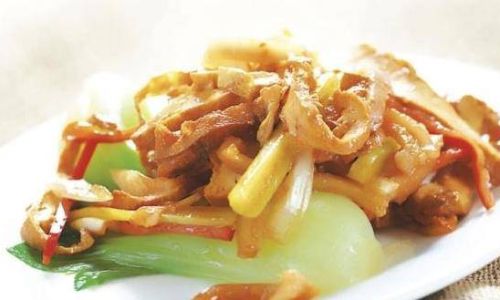
Thick spears may benefit from peeling the lower half of the stem to remove fibrous layers. Use a vegetable peeler and stop 1–2 inches below the tip to preserve tenderness.
-
Washing:
Rinse spears under cold water to remove sand or debris. Avoid soaking, as this can waterlog the tips.
Chapter 3: The Blanching Process
Blanching is the cornerstone of ice-chilled asparagus. This two-step method—brief boiling followed by shocking in ice water—preserves color, texture, and nutrients.
-
Boiling:
- Water Volume: Use a large pot (at least 4 quarts) to prevent overcrowding. Add 1 tablespoon of salt per quart of water to enhance flavor.
- Timing:
- Thin spears: 1–2 minutes
- Medium spears: 3–4 minutes
- Thick spears: 5–6 minutes
- Testing Doneness: Pierce a spear with a knife—it should meet slight resistance at the thickest part. Overcooking results in mushiness; undercooking leaves a raw, fibrous texture.
-
Ice Bath:
Fill a large bowl with ice and cold water. Immediately transfer blanched asparagus to the bath to halt cooking. Let chill for 3–5 minutes, then drain and pat dry with a clean kitchen towel.
Chapter 4: Enhancing Flavor with Seasonings and Infusions
While ice-chilled asparagus is delicious on its own, adding subtle flavors elevates the dish. Experiment with these techniques:
-
Aromatic Broths:
Replace plain water with vegetable or chicken broth for blanching. Add herbs (thyme, rosemary), garlic cloves, or lemon slices to infuse subtle aromas.
-
Post-Chilling Dressings:
- Toss chilled spears in a light vinaigrette (olive oil, lemon juice, Dijon mustard) or a drizzle of high-quality balsamic glaze.
- Sprinkle with flaky sea salt, freshly ground pepper, or grated Parmesan.
-
Herb Accents:
Roll spears in fresh herbs (dill, basil, chives) or microgreens before serving.
Chapter 5: Creative Serving Ideas
Ice-chilled asparagus is a blank canvas for culinary creativity. Here are five ways to present it:
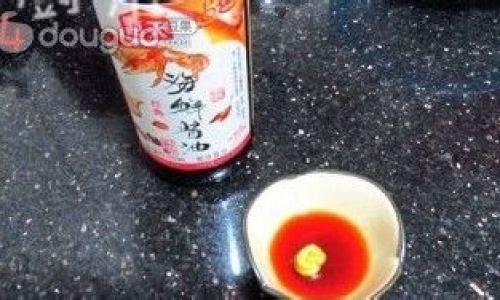
-
Crisp Appetizer Platter:
Arrange chilled spears on a platter with bowls of aioli, tzatziki, or smoked salmon dip. Garnish with lemon wedges and edible flowers.
-
Chilled Asparagus Salad:
Toss with cherry tomatoes, cucumber ribbons, and feta cheese. Dress with a lemon-tarragon vinaigrette.
-
Prosciutto-Wrapped Delight:
Wrap each spear in a thin slice of prosciutto. Secure with a toothpick and serve with melon balls for a sweet-savory contrast.
-
Sushi-Style Presentation:
Slice spears into thin strips and arrange on a bed of sushi rice. Drizzle with soy sauce and wasabi cream.
-
Cocktail Garnish:
Skewer spears with cooked shrimp or smoked salmon for an elegant hors d’oeuvre.
Chapter 6: Health Benefits of Asparagus
Beyond its culinary appeal, asparagus is a nutritional powerhouse. A 1-cup serving offers:
- Fiber: 3 grams (supports digestion)
- Vitamins: A, C, E, K, and folate (boosts immunity and cell function)
- Antioxidants: Glutathione, which combats inflammation
- Low Calories: Just 27 calories per cup, making it ideal for weight management
Blanching preserves more nutrients than frying or roasting, ensuring you reap the maximum health benefits.
Chapter 7: Troubleshooting Common Mistakes
Even seasoned cooks encounter hiccups. Here’s how to fix them:
-
Mushy Texture:
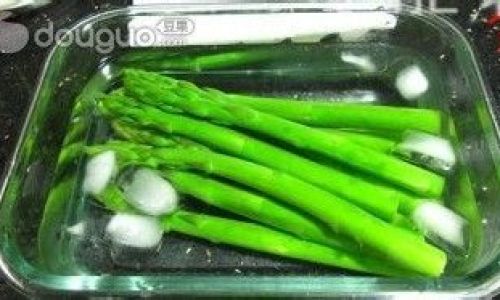
- Cause: Overblanching.
- Solution: Reduce cooking time by 1 minute and test doneness frequently.
-
Bitter Aftertaste:
- Cause: Overmature spears.
- Solution: Choose younger, thinner spears or peel thicker ones.
-
Cloudy Ice Bath:
- Cause: Insufficient ice.
- Solution: Use a 1:1 ratio of ice to water and stir occasionally for even chilling.
-
Soggy Spears:
- Cause: Inadequate drying after blanching.
- Solution: Pat spears dry with a towel or use a salad spinner to remove excess moisture.
Chapter 8: Advanced Techniques for the Ambitious Cook
Take your ice-chilled asparagus to the next level with these methods:
-
Sous-Vide Precision:
Vacuum-seal spears with butter, garlic, and herbs. Cook at 180°F (82°C) for 15–20 minutes, then shock in ice water.
-
Smoked Asparagus:
After blanching, smoke spears over applewood chips for 10 minutes. Chill and serve with smoked paprika aioli.
-
Pickled Variation:
Pack chilled spears in jars with vinegar, sugar, and spices. Refrigerate for 24 hours for tangy pickled spears.
Chapter 9: Pairing Suggestions
Ice-chilled asparagus pairs beautifully with:
- Proteins: Grilled salmon, seared scallops, or roasted chicken
- Cheeses: Burrata, goat cheese, or aged cheddar
- Beverages: Crisp Sauvignon Blanc, sparkling water with cucumber, or a light lager
Conclusion
Ice-chilled asparagus is a testament to the beauty of simplicity. By mastering selection, blanching, and seasoning, you can create a dish that’s both visually stunning and incredibly delicious. Whether you’re hosting a dinner party or craving a healthy snack, this technique ensures your asparagus steals the spotlight. Experiment with flavors, textures, and presentations—and don’t forget to savor each crisp, refreshing bite. With practice, you’ll soon find that achieving perfection is less about following rules and more about trusting your palate. So, grab a bunch of fresh asparagus, fire up the stove, and embark on a culinary adventure that celebrates the joy of seasonal eating. Your taste buds will thank you.
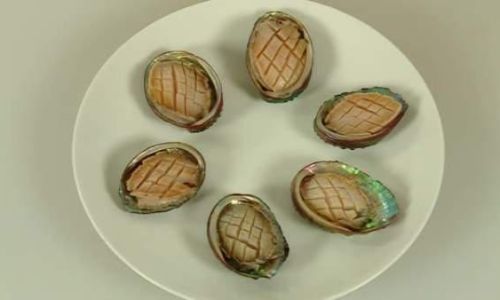

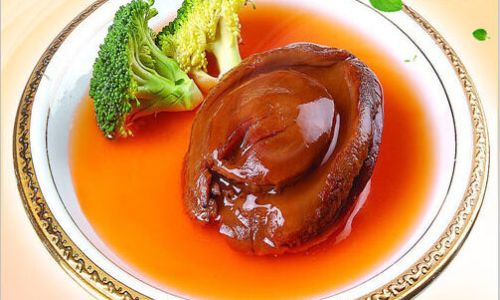
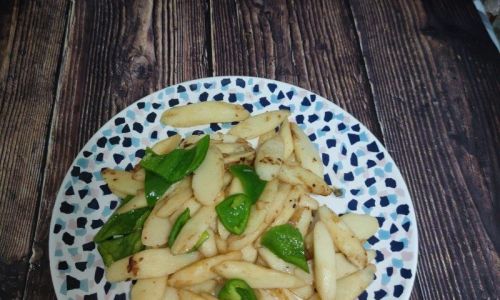
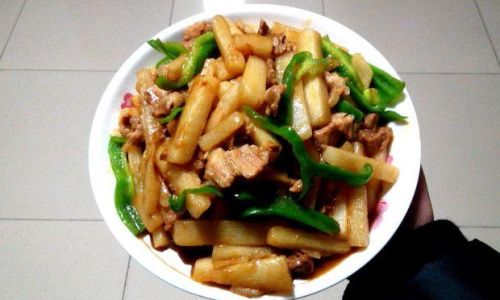
0 comments